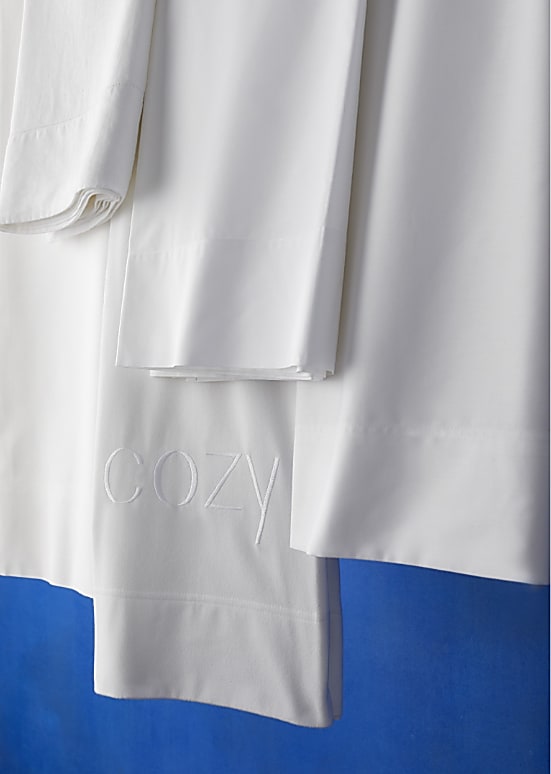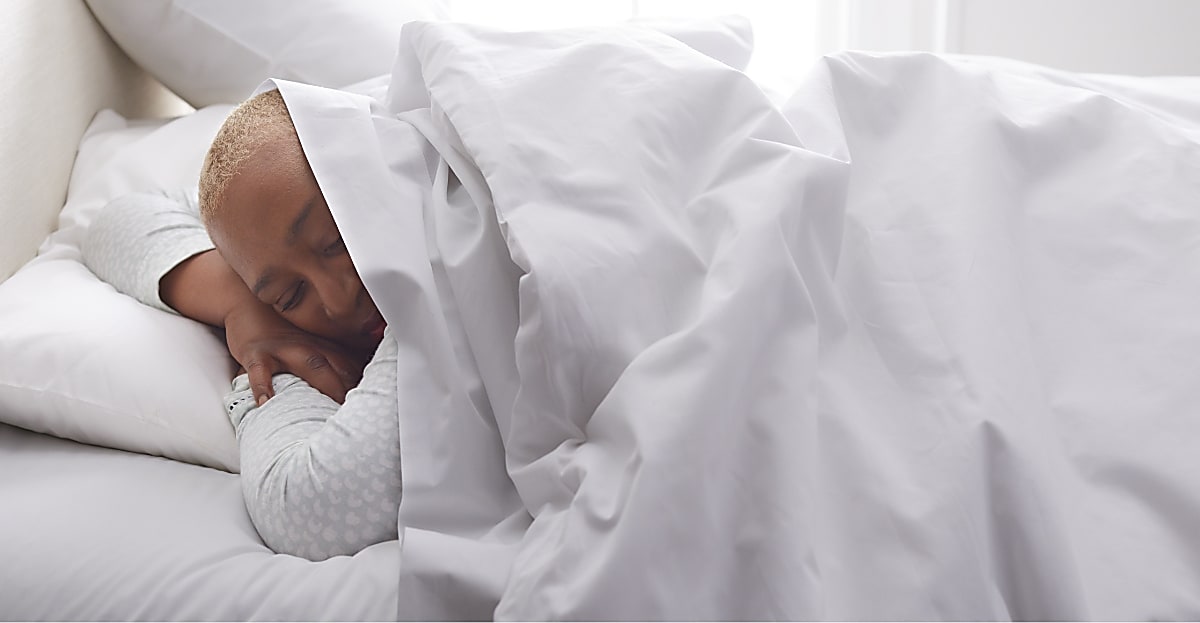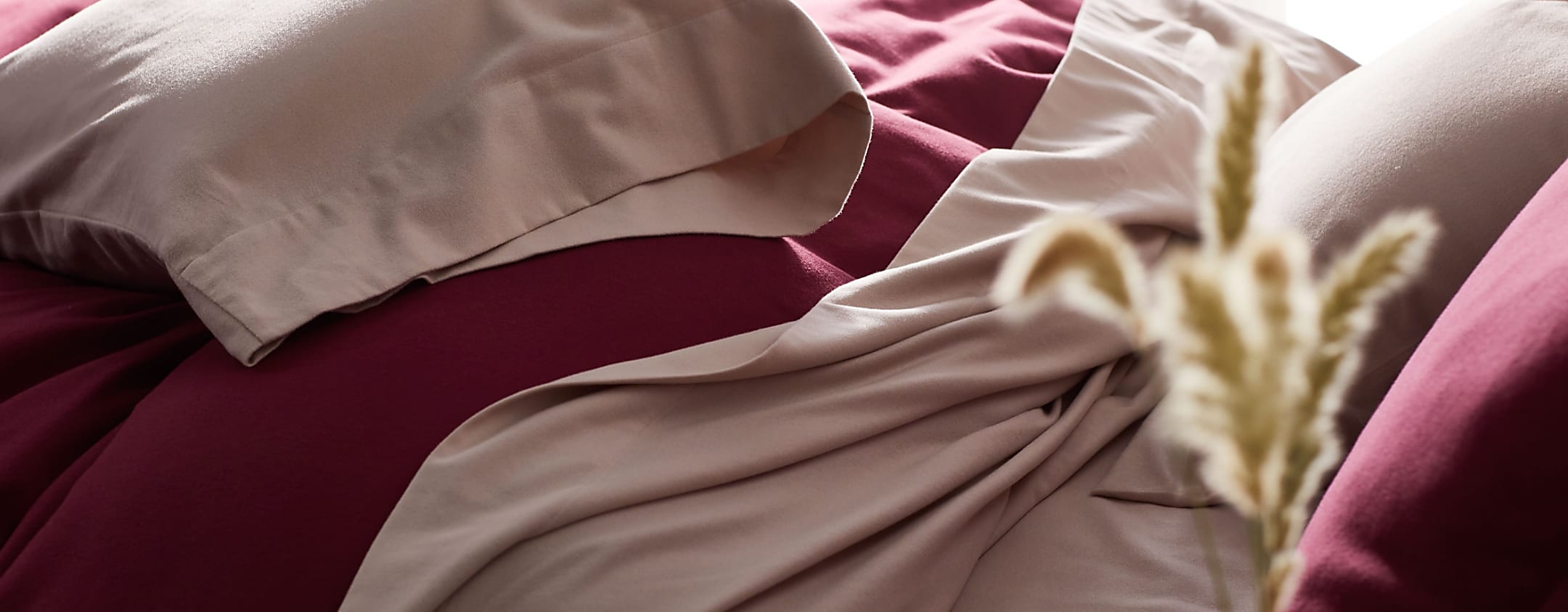A simple search for the best sheets will result in several pages summarizing the benefits of high thread counts, from exceptional softness to superior durability. But what is thread count, and does it actually matter when it comes to sheets and bedding? Explore our thread count guide to learn what this common measure means—and what it can tell you about the bed linens you’re considering.
What Does Thread Count Mean?
Thread count refers to the number of threads in a single square inch of woven fabric, calculated by adding together the number of horizontal and vertical yarns.
Does Thread Count Matter?
Yes, thread count matters—but not in the way you think it does. Commonly considered a mark of sheet quality, thread count more accurately indicates the tightness of a fabric’s weave. The higher the thread count, the tighter the weave; the lower the thread count, the looser the weave.
Thread count can also tell you about these qualities of sheets and bedding:
- Texture:Tightly woven fabrics feature a smoother surface than loosely woven ones, which is why higher thread count sateen sheets are buttery soft and wrinkle-resistant, while looser percale weaves are crisp and more likely to ripple.
- Warmth:A lower thread count indicates a looser weave for more lightweight sheets and cooler sleep. High thread count sheets, in contrast, are often better for cold sleepers and winter weather.

Think beyond sheets when considering the benefits of high thread counts. Down and down alternative fill is less likely to escape from comforters or pillows with down-proof shells made from tightly woven, high-thread-count materials.
Are Higher Thread Counts Better?
No, higher thread count is not necessarily better. Any thread count over 600 is likely artificially inflated. Some manufacturers spin thinner, weaker fibers into multi-ply yarns or threads, resulting in fabrics with thread counts that are two or three times as high—but that are not necessarily stronger, softer, or warmer.
What Is the Best Thread Count for Sheets?
The best woven cotton sheets and bed linens are made using single-ply yarn and come in thread counts between 200 and 600, depending on the fabric’s weave. Because linen fibers are thicker, linen bedding features lower thread counts. Knit materials, such as jersey sheets, are not woven, so thread count doesn’t apply.
Consult our handy guide to find the best thread counts for sheets made from these common fabrics:
- Linen (80 to 120 thread count):Durable linen sheets are made from thicker yarns than their cotton counterparts, which means thread count is less of an indicator of quality or softness—so much so that the measure may not even be listed, and may use grams per square meter (GSM) instead. Linen sheets are often rough at first, but the natural fibers will soften over time with use and laundering.
- Cotton Percale (200 to 400 thread count):High-quality cotton percale offers a loose, durable weave that allows its lightweight, crisp, cool feel. The minimum thread count for fabric to be considered percale is 180, but the best cotton percale bedding features a thread count between 200 and 400.
- Cotton Sateen (300 to 600 thread count):Buttery soft cotton sateen is smoother than percale and boasts a higher thread count—between 300 and 600. Sateen is woven with more vertical yarns than horizontal ones, which creates its silky appearance.

What Is a Good Thread Count for Flannel Sheets?
Flannel sheets are measured by weight, not by thread count: look for grams per square meter (GSM) or an ounce rating instead. Choose flannel sheets that are at least 170 GSM or 5 ounces, and keep in mind that the higher the number, the more dense and warmer the flannel.
When it comes to bedding, choose sheets with thread counts between 200 and 600, but pay more attention to materials and construction as indicators of quality than focusing on thread count alone: all of our bedding is made from durable, soft natural materials for more comfortable sleep. Explore our Inspiration Guide for more bedding advice and ideas.
